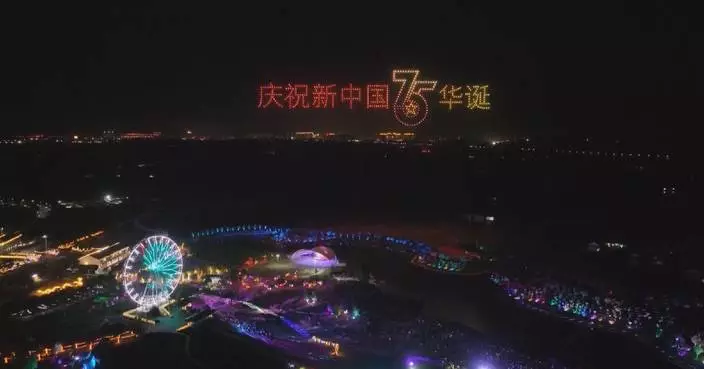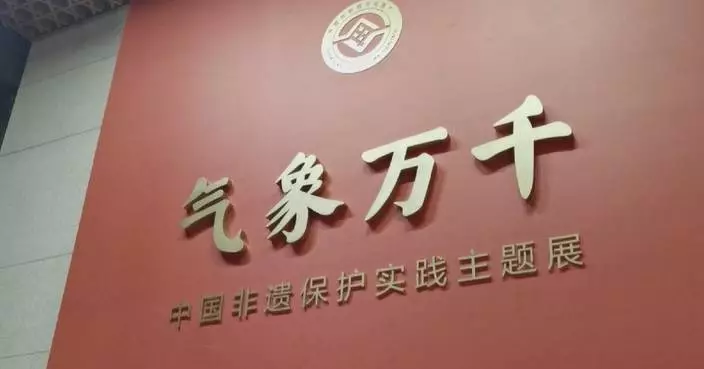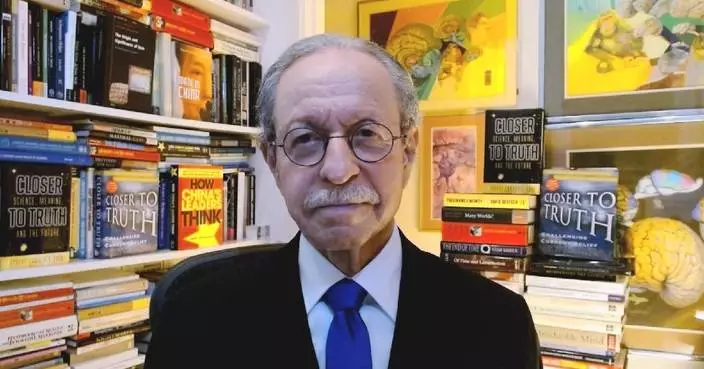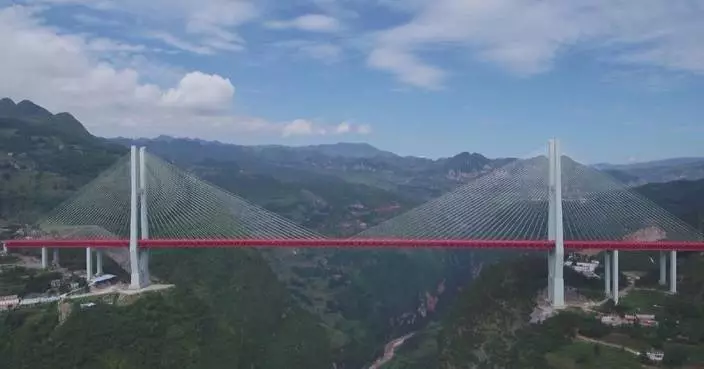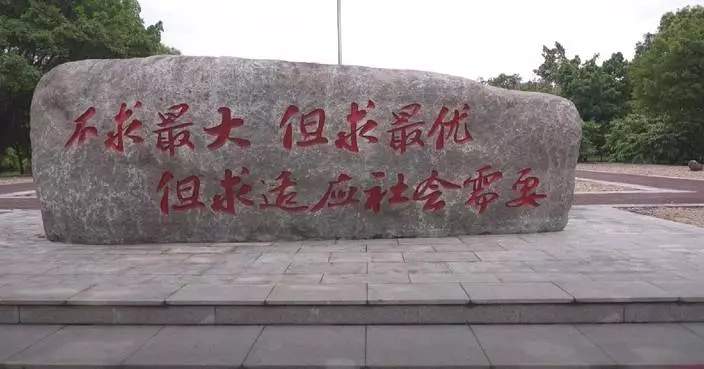China's car trade-in program stimulates consumption during the National Day holiday as visitors are flocking to auto shows held in the country.
The Shenzhen October International Auto Show kicked off in Shenzhen, south China's Guangdong Province on Tuesday, which is also the first day of the seven-day National Day holiday, drawing a throng of passionate citizens to visit the show and buy new cars. The five-day show drew about 120,000 people to visit on Tuesday, generating a revenue of 1.5 billion yuan (around 213.13 million U.S. dollars).
Last month, a new round of car trade-in policies rolled out by the local government allows local citizens to enjoy a maximum subsidy of 30,000 yuan (about 4,262.63 U.S. dollars) when they scrap their old cars to buy new ones.
"I want to buy a car priced under 300,000 yuan (about 42,625.74 U.S. dollars), and it is about 60,000 yuan (8,525.51 U.S. dollars) cheaper after the trade-in," said a citizen surnamed Luo.
Apart from government policies, subsidies and discounts provided by car brands at the exhibition also contribute to this shopping frenzy.
"It's beyond our expectation. The fourth quarter is traditionally a peak season for car sales, and this bustling scene boosts our confidence," said Hu Qing, sales manager of a brand at the auto show.
In Lianyungang, east China's Jiangsu Province, over 200 models from 50 auto companies are being showcased at an auto show held in the city during the holiday.
It attracts many potential purchasers following the implementation of trade-in programs rolled out by China.
Major auto dealers at the show also provide trade-in and financing subsidies, enabling consumers to get a car at a more affordable price.
"China has launched subsidies for new energy vehicles trade-in, so I want to take this opportunity to replace my old car with a new one during the holiday," said Bao Haitao, a local resident.
In August, China has increased a financial stimulus to encourage consumers to scrap their old vehicles and buy new ones. Subsidies for trade-ins of new energy passenger vehicles have doubled to 20,000 yuan (around 2,841.8 U.S. dollars), according to the document released by the Ministry of Commerce and six other government departments in the country.
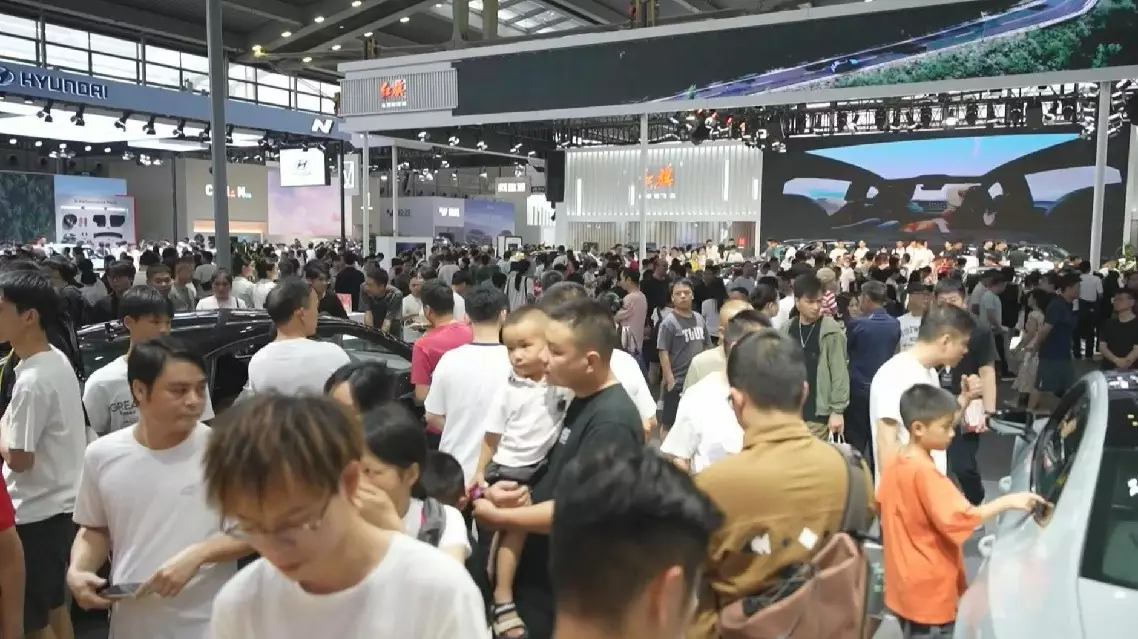
Vehicle trade-in spurs consumption in China during National Day holiday
Israel's threat to target Iran's oil production infrastructure, including gas and oil rigs, refineries and storage facilities, has heightened market concerns about international crude oil supply, leading to a significant spike in international oil prices during the U.S. trading session on Tuesday.
The price of both U.S. light crude oil and Brent Crude Oil Futures rose by more than 2 percent on Tuesday with the upward trend continuing into Wednesday.
The price of light crude oil futures for November delivery on the New York Mercantile Exchange reached 72.13 dollars per barrel in Wednesday morning trading while London Brent Crude Oil Futures for December delivery reached 75.74 dollars per barrel.
During the U.S. trading session on Tuesday, international oil prices surged by over 5 percent, reaching an intraday high, but later retreated as market sentiment gradually stabilized.
Tensions in the Middle East have heightened concerns about oil supply, yet analysts believe that it is unlikely to lead to a long-term and significant disruption in global crude oil supply.
"There is now uncertainty about where is the next target. Energy facilities, critical infrastructures could be the other target. Looking at where the prices will go, definitely it depends on where the destruction would be and how much oil is going to be taken off the market. But historically, we have seen that geopolitical factors, if the impact is not in a larger scale and could be mitigated, is not huge,” said Sara Vakhshouri, president of SVB Energy International, a U.S.-based strategic energy consulting firm.
Iran is among the world's top 10 oil producers, with a production of 3.277 million barrels per day in August this year, according to the monthly report from the Organization of the Petroleum Exporting Countries.
Market estimates suggest that Iran exports approximately half of its oil production. Investors are concerned that the escalating tensions between Israel and Iran, the potential attack on Iran's oil facilities or Iran's blockade of the Strait of Hormuz could heighten the risk of further increases in oil prices.
International oil prices are also facing widespread pressure from oversupply and weak demand. Several Wall Street investment banks including Goldman Sachs and Morgan Stanley have lowered their long-term oil price expectations, and Citigroup has projected that oil prices could fall to around 60 dollars per barrel by 2025.
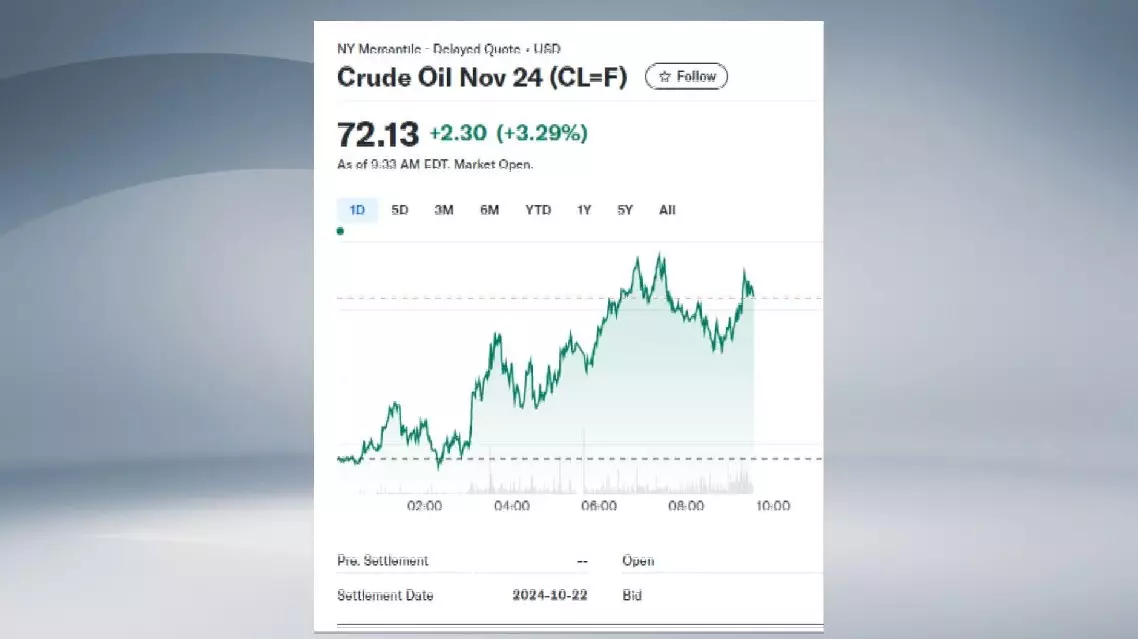
Israel's threat of attacking Iran's oil production drives up int'l oil prices





